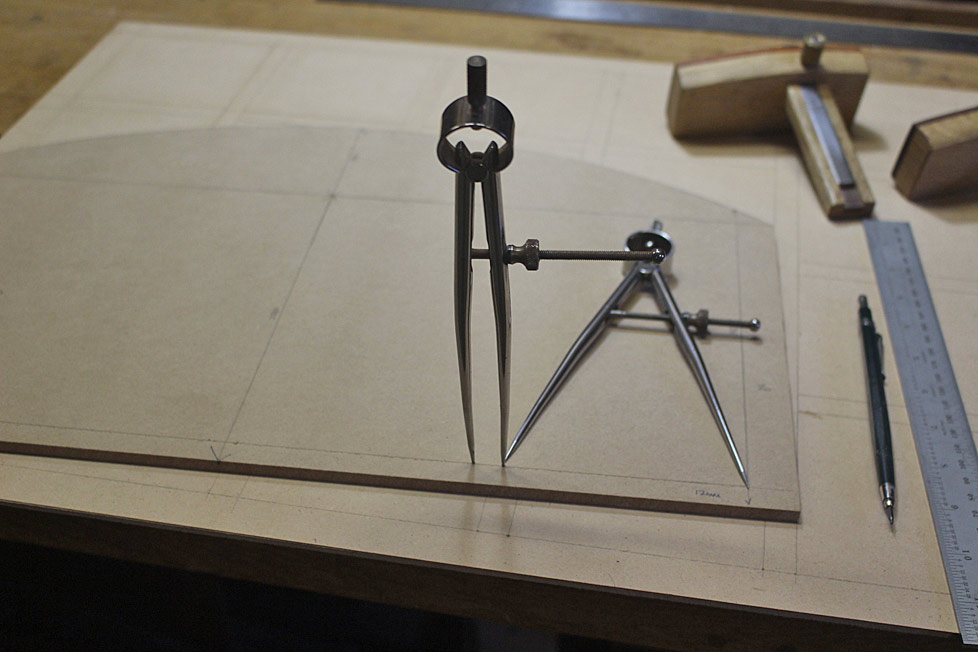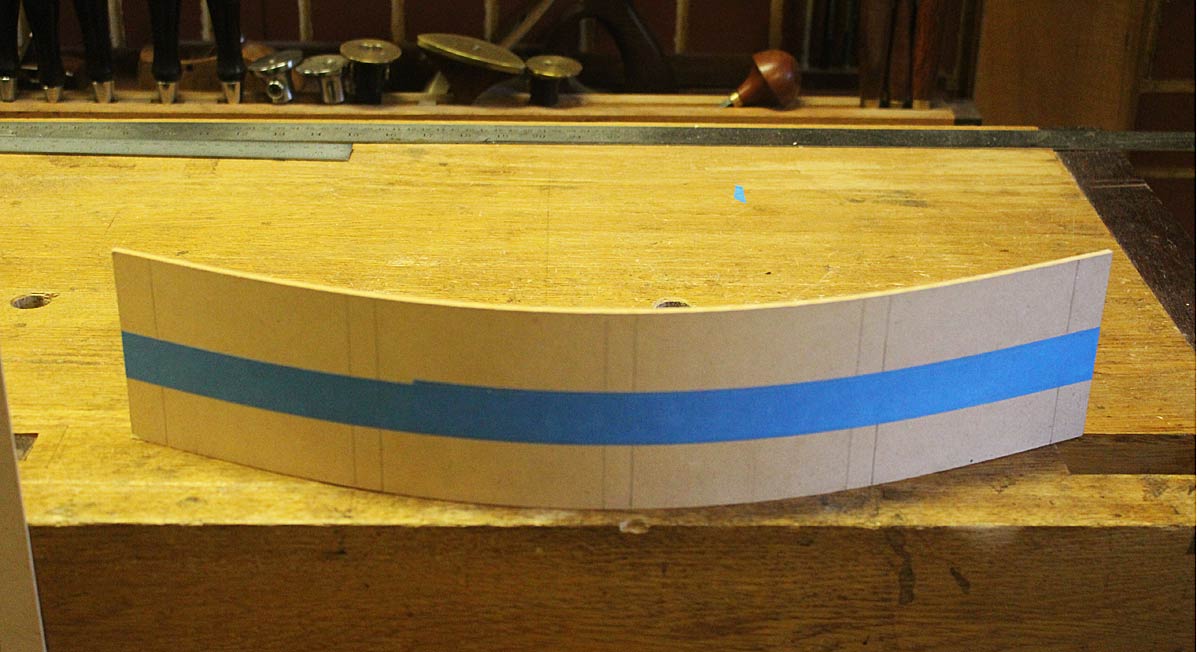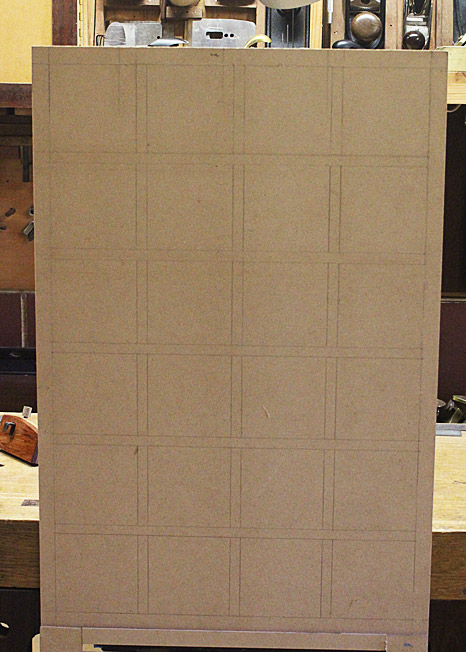The topic was raised elsewhere about the desirability of an Incra T-rule (the one with the million little holes to guide a 0.2 pencil - link below). I looked at this square and recalled that I've had one of these on my shelf for over 10 years, and that I had used it once or twice only ever. It looks a great idea, but in practice is too fiddly for me.
It occurred to me that perhaps I look at drawing differently to others, and so I thought that I would throw this out here for viewpoints ...
In practice, also, I do not use a scale to measure much (after drawing up to life scale, which acts as a story board). Usually, I transfer dimensions with a divider, and then run them off with a cutting gauge - which is why I have so many gauges (I'm sticking to that story!).
Here is my current project, an apothecary chest - making a template for laying out the vertical and horizontal dividers. The apothecary chest is complicated by having a curved front ...
This is the curved front (but not the template, which was made with a trammel to achieve a true curve) ...
Each one of these points was marked with two dividers (no rulers) ...
I draw onto 6mm MDF sheets. It is cheapish, and it durable - It will take being scraped if needed (to remove marks), a divider can leave pin marks (to which to draw), and a cutting gauge will leave clean lines. Later, the templates may be stored for another day.
Regards from Perth
Derek
Edit for Link: https://www.incra.com/measuring_marking-trules.html









 Reply With Quote
Reply With Quote

